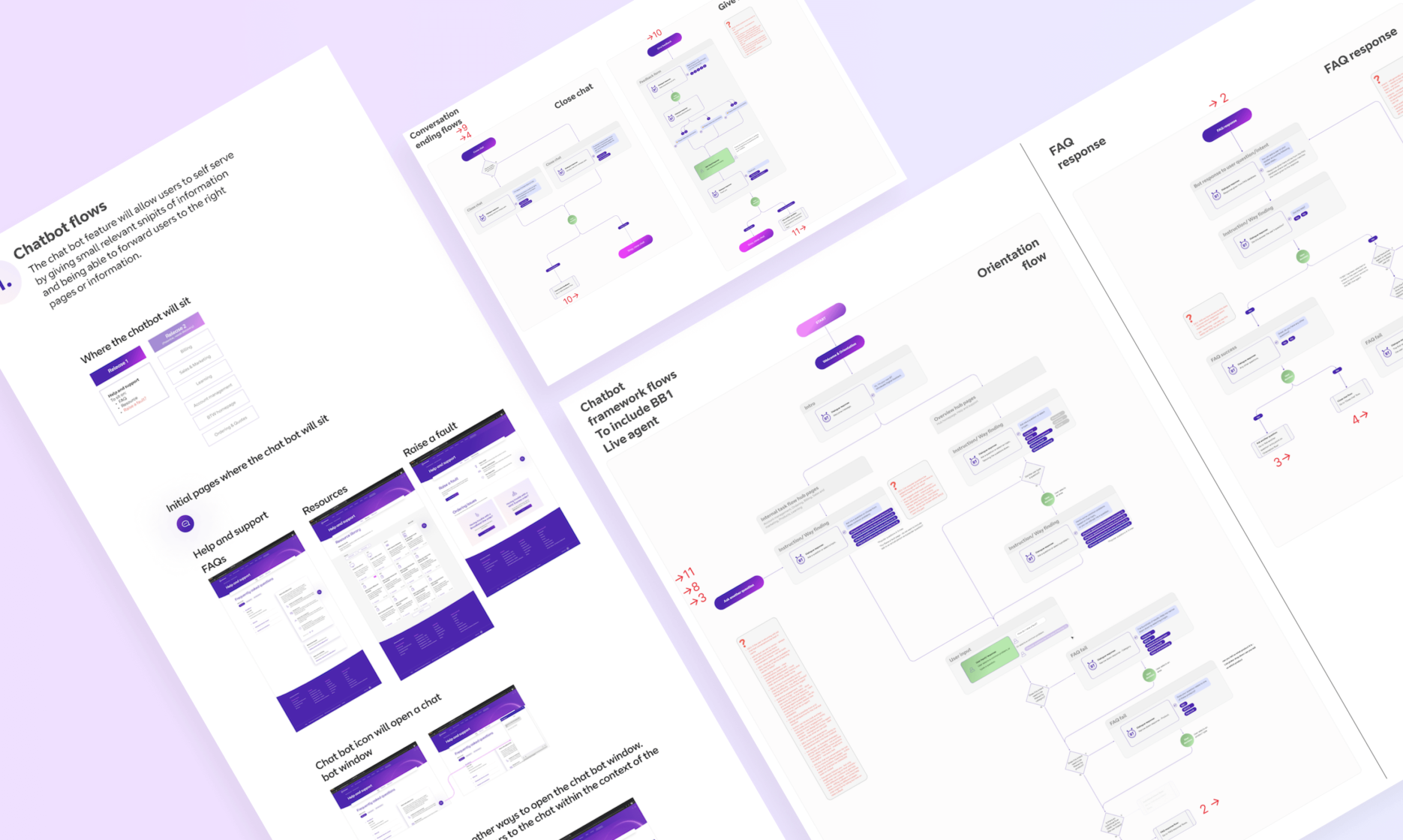Project: Message now platform
Client: BT Wholesale
Company: EPAM
Date: September 2022
Skills used: Leading workshops, Wireframing & Prototyping, CUI design, Team leadership, 3 Amigo’s, Requirement gathering, Stakeholder management, Sprint planning, Content strategy
The problem: After conducting interviews with the BT Account managers and the Service help desk teams it was found that a lot of their time was being taken solving problems that the customer could self serve. An example of this would be a password re-set, or finding the right documentation around a specific problem. This was stopping the help desk from spending the time they needed to solve outages, as well as putting the user into a system where they may have to go on multiple calls.
Solution: To creat a chat bot that could sit across the website and give common questions depending to the page the user is on, and direct the users to correct support teams when needed.
Intro
Working with a Business Analyst, Content strategist, and UI Designer, we were asked to start to look at the creating a chat bot that could help take the pressure away from the service teams, and help answer the questions that can easily be self served.
Sprint planning
Because the team was fairly new to the process of creating and developing a chat bot the first piece of work I did was create a brake it down into epics, and then the sub tasks that might sit under this. Listing all the roles for the various job types that was needed, from BA, Content strategy, UI, UX, Development, and QA. This allowed our Scrum master and PO to understand the tasks for the quarter and to start putting these into Jira, helping inform the business of the work our squad will be needing to do. Another role of this was to allow the business to understand that the initial release and the content to go with it was only a starting point, listing key tasks that would need to become BAU, to updating the content as we learn more about what the customers are asking for.

Initial workshops
The BA’s within the squad had worked with the business to understand the requirements, and built out a few technical flows. The next job was to run a workshop using these flows. Here I got the internal team together using FigJam to post-it note the areas we needed to cover, any questions that we might have, and then to quickly post-it note the conversation parts that might be needed, to give us an idea of the areas that might be needed. for example Intro, Navigate, FAQ answer, Individual intent flow, and send to a live agent.

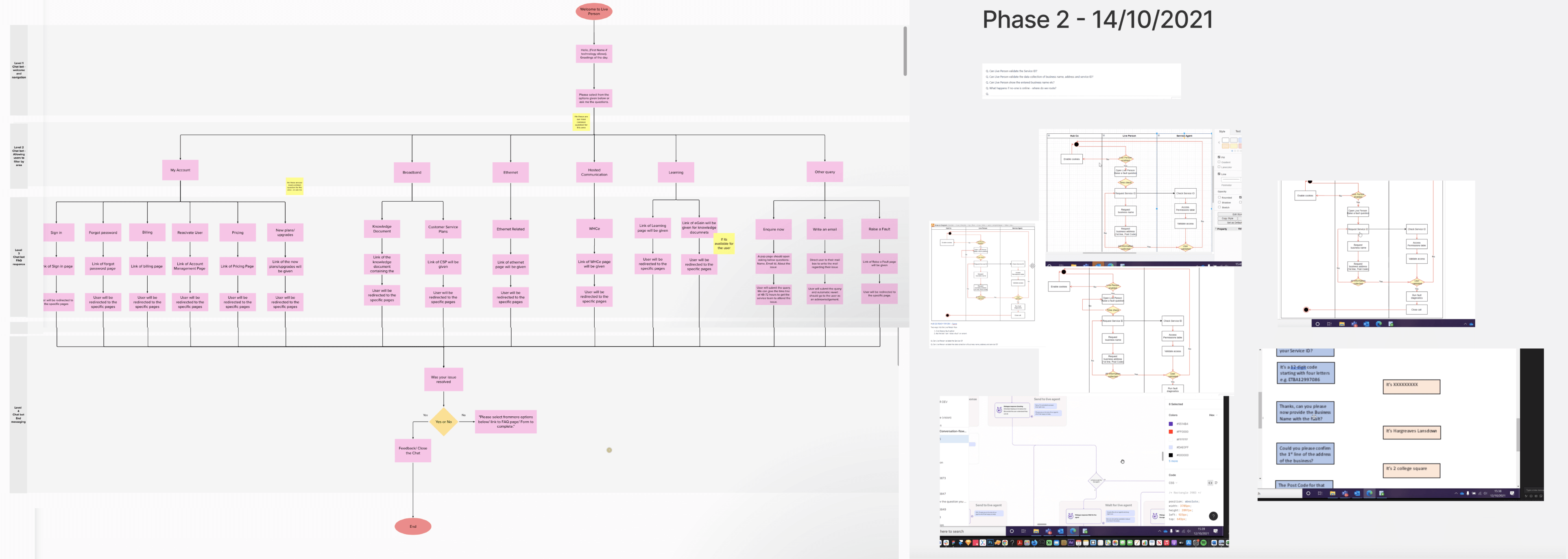
Scripting
We then used the conversation part flow from the workshop to do a quick scripting exercise. This allowed us to think about the language we would start to use and give a first impression of how the chat bot might work, and where the user would have to input.
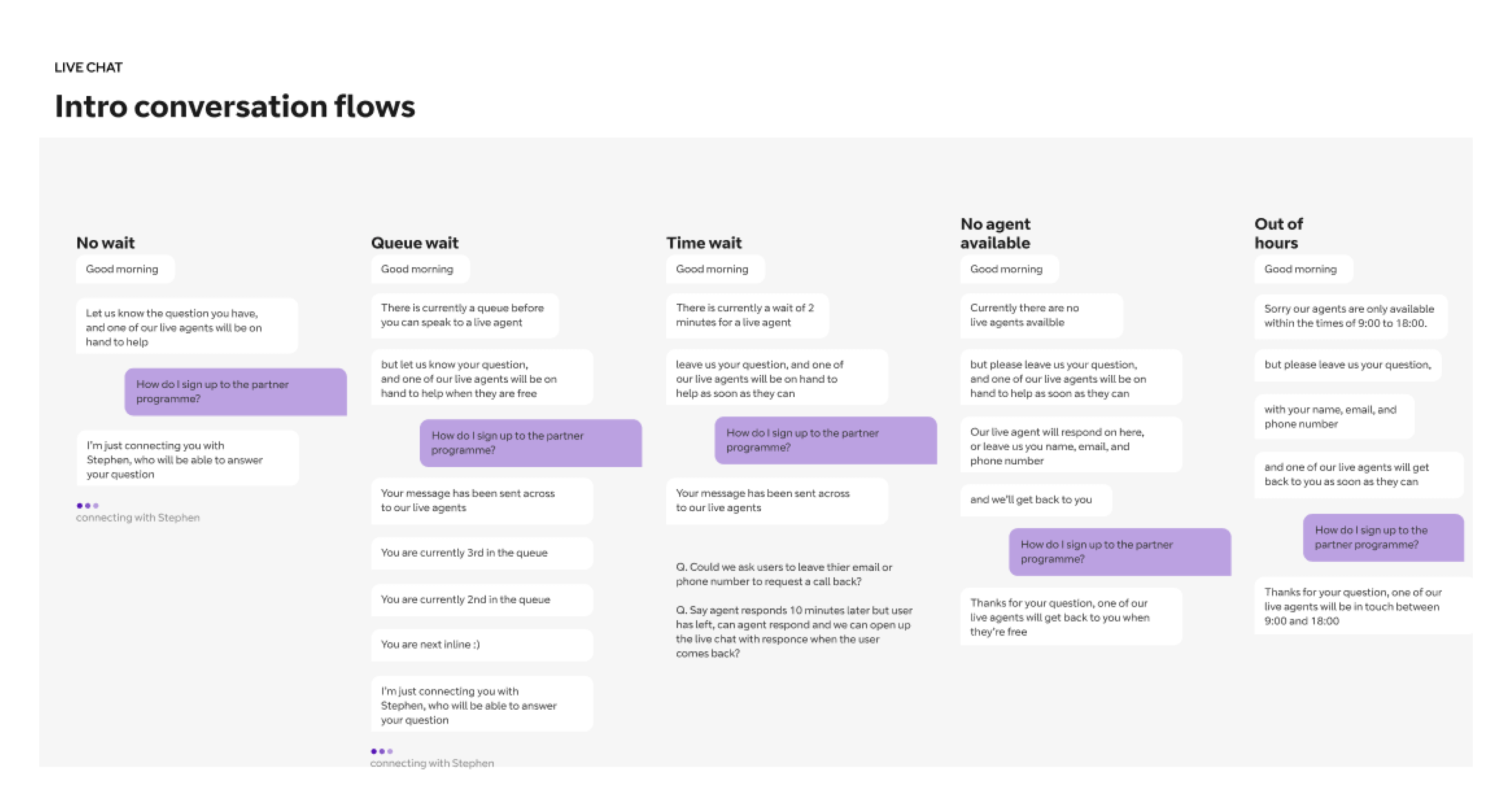
Flow workshop
Now that we had designed the conversation parts and the language we might start to use. Myself, Content startegest and UI designer got together to start to create a more formalised flow. This would allow us to see how the different conversation parts might work together to give the user a seamless journey, as well as to understand on what pages the flow may need to differ. For example on the homepage and help and support we may give more generalised common questions, do being more specific when on an order journey, as well as to understand when we might want to direct users to a live agent.
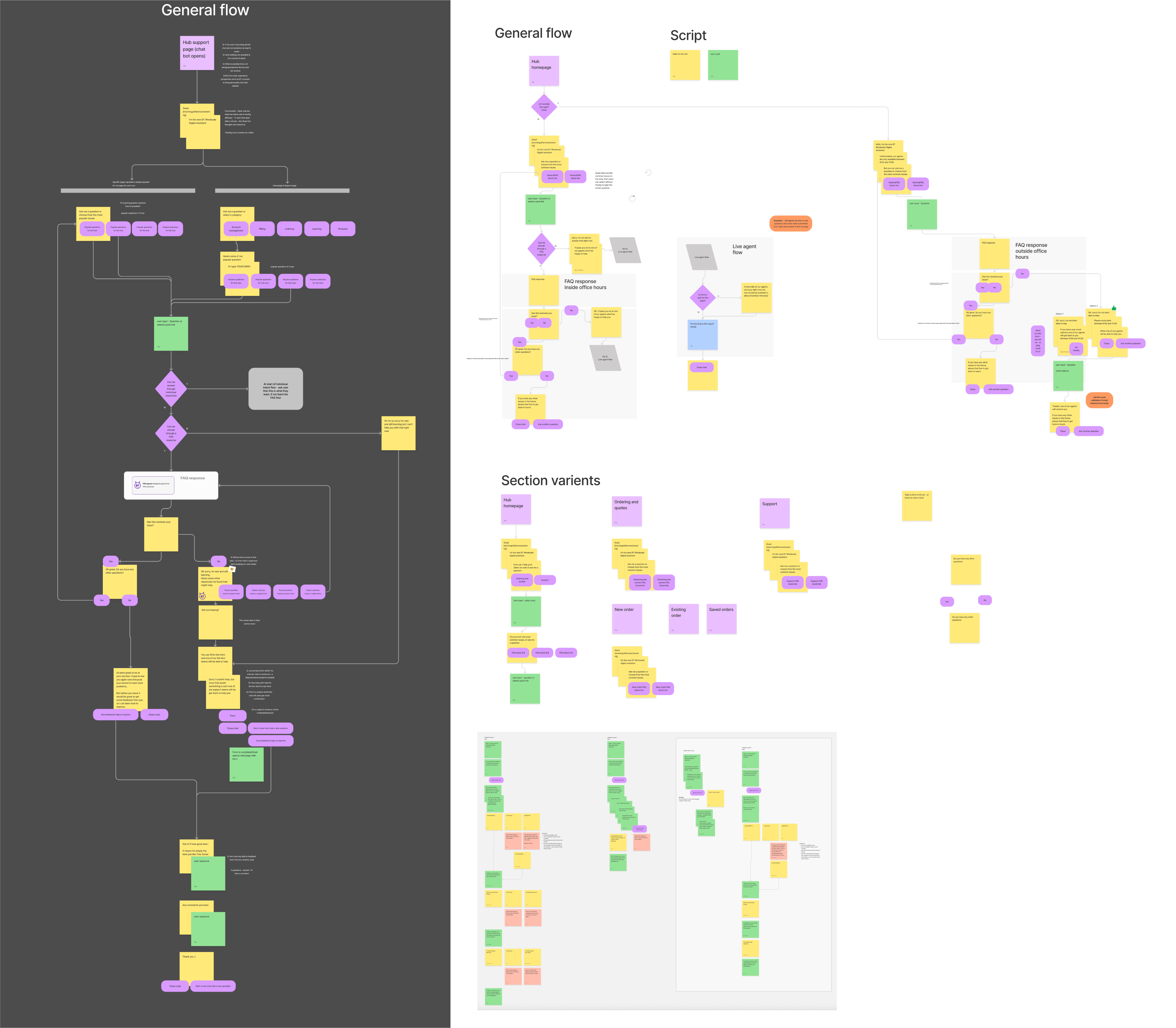
Delivery flows
My next job was to formalise the flows a little more and create more of a deliverable for the business, and allow the copy writer to really get the copy right. This was then used to help present to the business in end of sprint demos, as well as Amigo sessions with the developers, so that we could start to dig into some of the questions we may have had, and to get any feedback and thoughts from the devs.

Content
The next step was to start to understand what the content should be housed within the chat bot. Here we created a number of workshops where we met with the 4 different support teams, to understand the mains issues they face on a day to day basis. Here we gave them a brief introduction to the project and then gave them the space to note down all the different reasons users come to them, and the challenges they face. For the next exercise we then sorted these thoughts into the key areas – Reseller self serve, What issues the service team should support, and what problems come to them but should actually be looked after by another team. As this is a brand new website and there was no prior knowledge we felt that this would give us a good starting point for content that might be required not only on the chat bot, but also across the hub. Also making sure that the business Knew that the content creation would have to become a BAU task as we learn more about what the customers are asking when live.
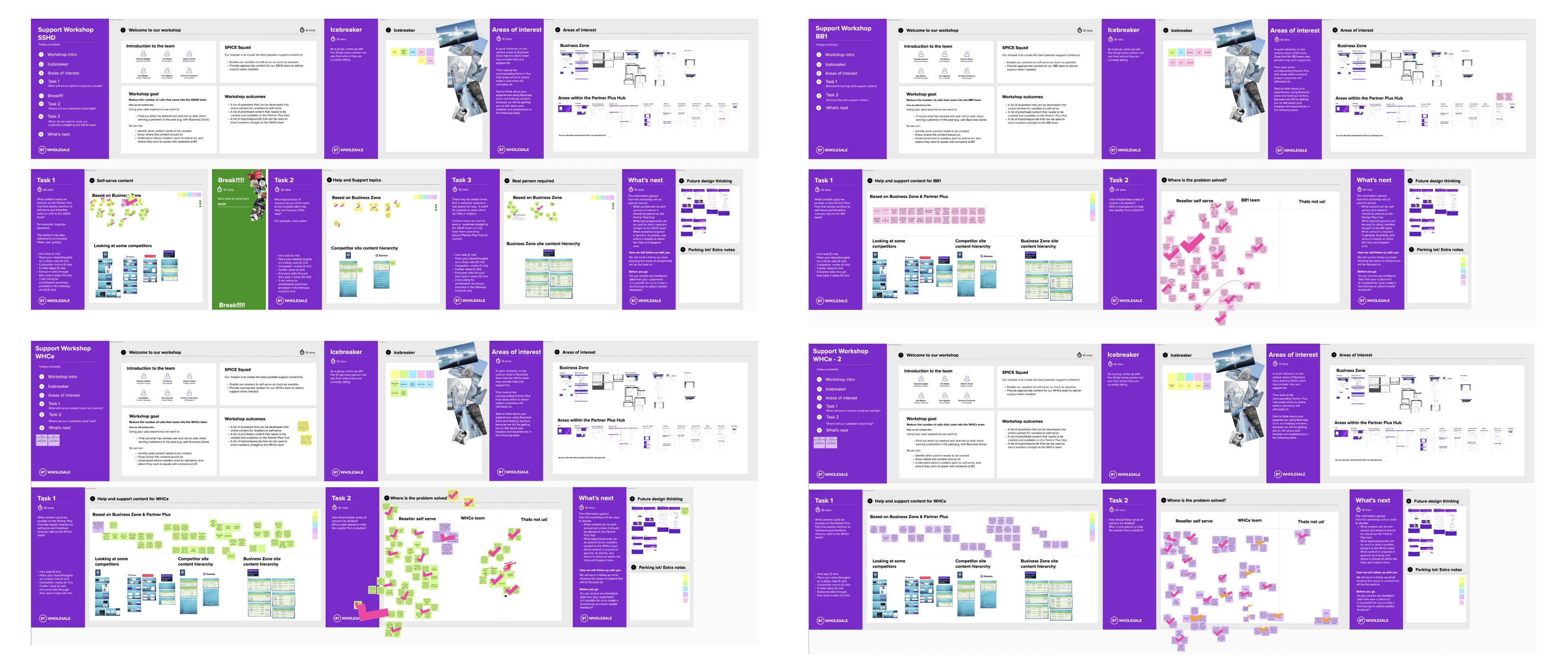
Content: Synthesis workshop findings
The next job was to move all the thought into a spreadsheet, so we could start to organise and prioritise the various bits of content we needed to create. With this we ran though with the a few of the leads from the support teams again just to make sure we had got everything right and note down any other further information. We also found that this document became a good place for other teams and squads to use to help them organise their content such as the learnings squad that who look after the training portal.

Content: Creating content for the chat bot
The next stage was to build another spreadsheet so we could start to populate the content ready for the dev’s to start plugging into the chat bot. Here we ran a number of sessions to help us populate the the 20 intent variants to help the AI learn and find the right intent response.
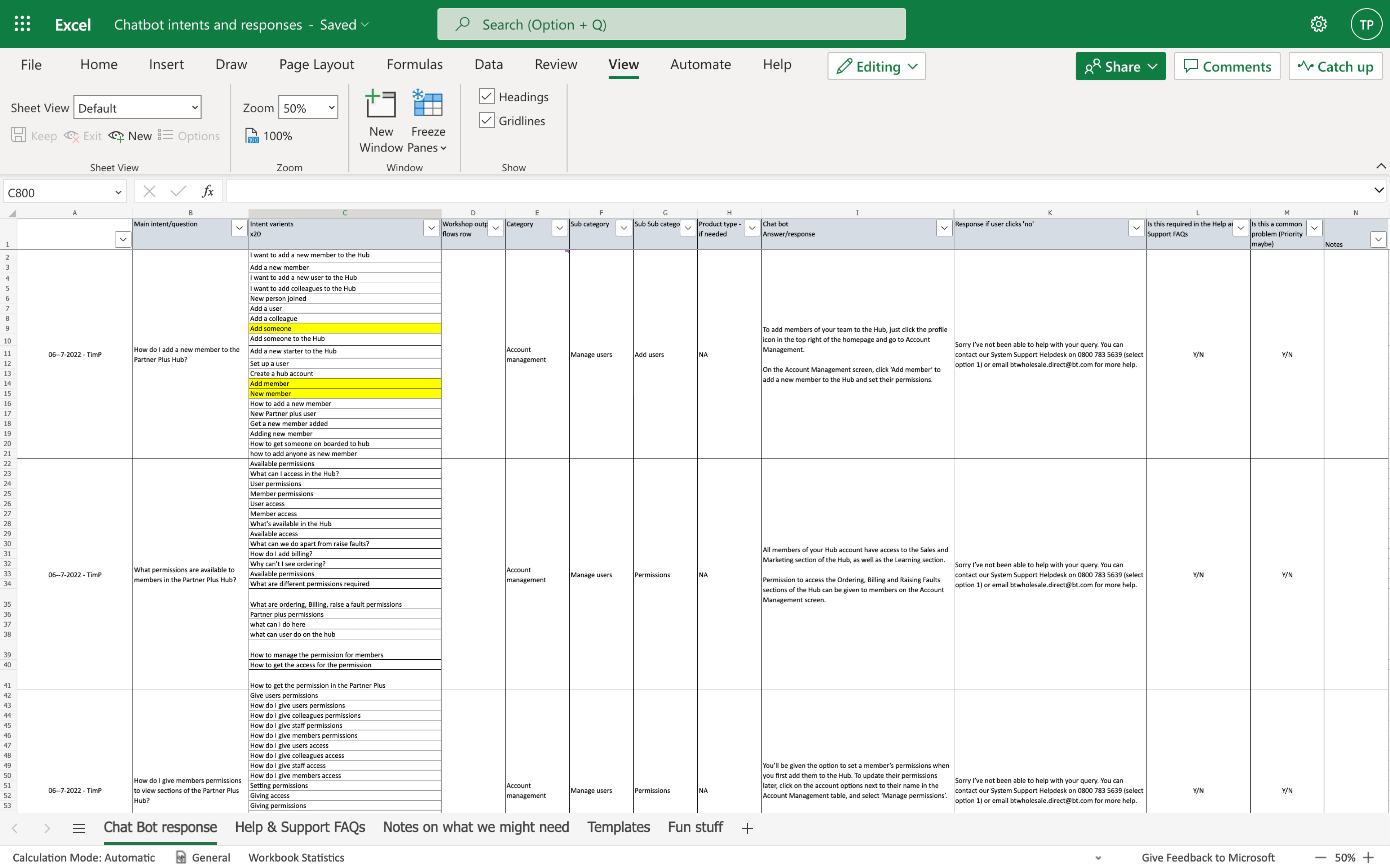
Review build
Once the build was complete the final stage was to review the build, and make any small adjustments where we felt the flows weren’t working quite as well as it should.

